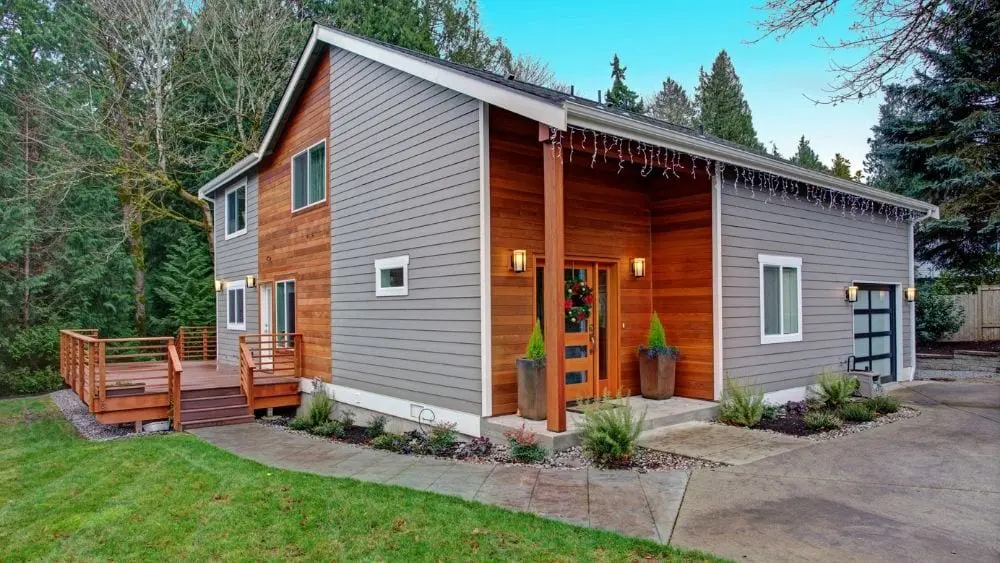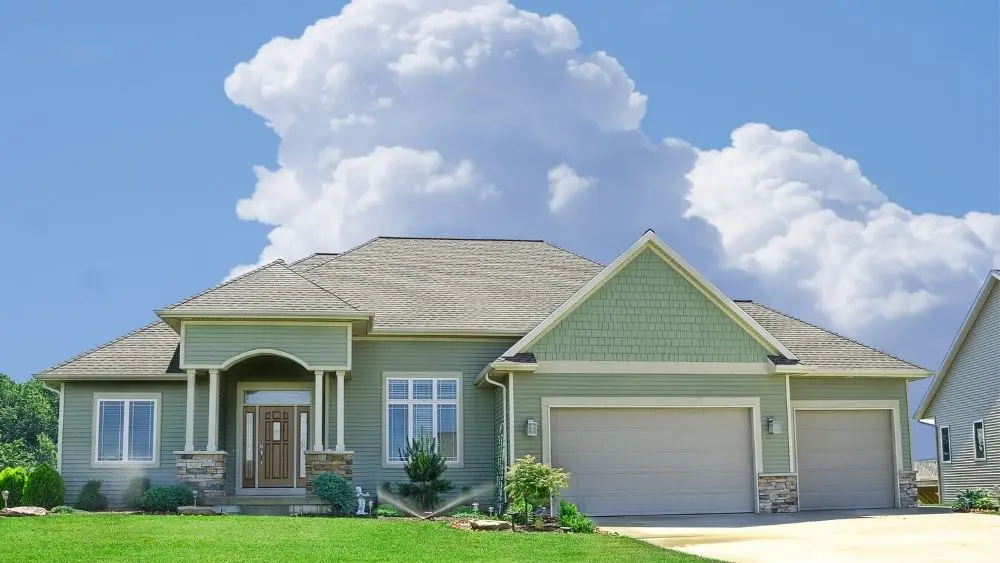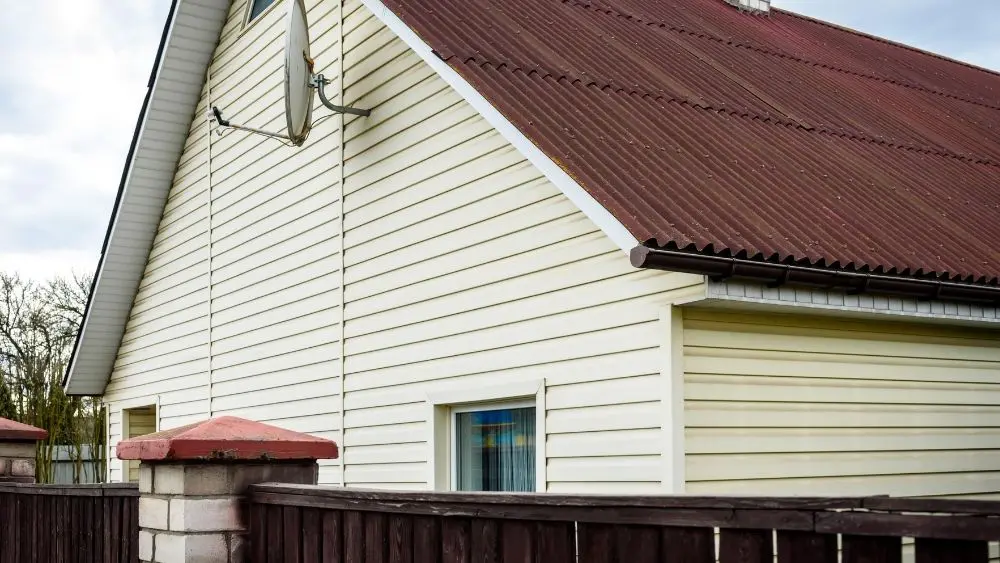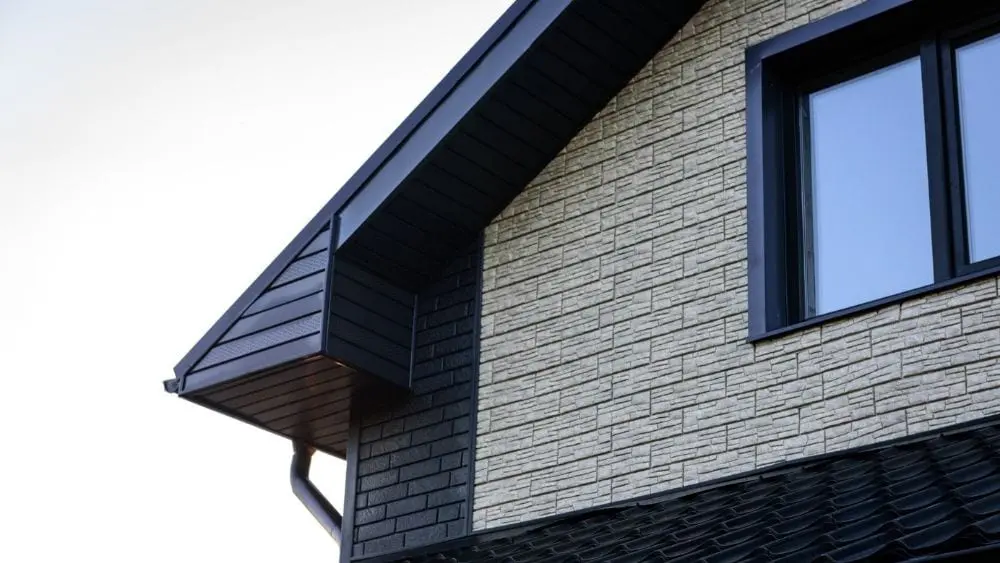
When you’re choosing a siding for your home, there are many options on the market. If you’re looking for an inexpensive, easy-to-install, low-maintenance option that still looks trendy and high-end, look no further than vinyl siding.
Vinyl siding is a strong and durable option composed of specially-made plastic to be used as cladding on the exterior sides of the home. When it was first introduced, vinyl siding options were fairly limited and mostly consisted of pale beige or washed pastels. But with the aid of modern technology, vinyl is now available in a vast array of richer, bolder colors and styles. Some vinyl siding even mimics the look of real wood or slate.
Even though the benefits of vinyl siding are coming in strong, there are some drawbacks to consider. Since the siding of your home is a considerable investment, it’s a good idea to do your research and consult your construction expert before you purchase the materials and begin installation. Here are some points to keep in mind as you choose a vinyl siding.
Vinyl Siding Design
Vinyl siding has come a long way in recent decades. Nowadays, you can choose a Marigold to brighten up the block or an Autumn Red to create a warm welcome. A calming Coastal Blue looks great on Colonial-style homes or beachfront property. If you desire the aesthetic created by another material such as wood or slate, you could choose a vinyl with the likeness of your preferred material for a less expensive price tag than the real thing.
Aside from color choice, you’ll also need to choose the application type. Vinyl siding can be applied in the form of shakes or horizontal planks. For shakes, vinyl is cut into square or rectangular pieces and layered vertically to give the appearance of shingles. Horizontal planks are long pieces of vinyl that are mounted lengthwise across the house.
Vinyl siding can be used on almost any type of home. If used as shingles, it can be layered to fit rounded turrets and challenging architecture. It looks lovely on Ranch-style homes, modern urban townhomes, and even the quaint cottage or bungalow.
Cost of Vinyl Siding
Vinyl siding is the least expensive siding type, costing anywhere from $1 to $8 per square foot depending on the quality of materials. Installation costs depend on location, home size, and labor costs, but can range from $2,000 to $16,000 per 2,000 square feet. Additionally, vinyl siding is a great home insulator and may assist in lowering your long-term utility expenses. Overall, vinyl siding is considered a superb choice for best value.
Benefits of Vinyl Siding

Vinyl siding comes with many benefits including low cost, minimal upkeep, and durability:
No Painting Required
Hate painting? Vinyl siding may be a dream come true. Most other siding materials require some form of stain or color layer, but vinyl siding is purchased with the color actually baked-in, making it impossible to scratch or strip off.
Inexpensive
Compared to other materials, vinyl siding is relatively inexpensive. If you like the look of slate or wood, you can purchase the look-alike vinyl version for a fraction of the cost of the genuine material.
Easy Installation
Installation of vinyl siding is relatively simple many homeowners choose to install it themselves. However, it is always recommended to seek professional help and advice before tackling this endeavor. Most homeowners seek a contractor simply for their expertise. Proper installation means less likelihood that the siding will expand or crack over time, leading to bigger and more expensive maintenance issues. Construction warranties may be voided by faulty or improper installation, so be sure to do your research and seek professional help if needed.
Durability and Lifespan
Vinyl siding is often seen as virtually indestructible. It can withstand harsh elements and wild wind gusts up to 110 mph. In the case where a rock flies from your lawnmower and pierces the siding, you can replace the plank fairly easily and cheaply. Most manufacturers boast a lifespan for vinyl siding of up to 30 years.
Low Maintenance
Because there isn’t any paint to scrape or peel, the vinyl surface is incredibly easy to clean. The occasional debris, bugs, cobwebs, or mud can be removed fairly easily when sprayed with your water hose. Never use a power washer on your vinyl siding, as this could cause serious havoc if the water enters your home through cracks around the siding or exacerbate minor tears in the crevices.
Efficiency
Vinyl is an excellent insulator for your home and may reduce your utility costs by aiding in temperature regulation. By assisting your HVAC and home systems, your vinyl siding can take some of the burden off of your central systems and help them to run smoother and longer, thus potentially lengthening the lifespan of your appliances.
Disadvantages of Vinyl Siding

While vinyl siding offers many benefits, there are a few drawbacks to consider:
Maintenance Issues
Even though vinyl can withstand many harsh conditions, it can have some maintenance issues down the road that should be on your radar. Vinyl may bend and crack if it’s under a great amount of pressure or was installed incorrectly. If initially nailed too tight, it may expand and bulge or warp over time. If a plank is torn or cracked, it cannot be patched – the entire piece must be replaced to prevent further damage and to block water from entering your home.
Color Fading
Vinyl siding can’t chip or scratch – but it will fade. While vinyl siding holds a manufacturer’s claim to last up to 30 years before it begins to deteriorate, it still may require replacement within 10-15 years in some climates. If your home is exposed to high heat and intense sun rays, your vinyl siding may begin to fade in color within the first 10 years. You might consider painting the vinyl to help revive the vibrancy of the color in the short-term, but the paint will inevitably chip and peel over time until you replace the vinyl.
Moisture Problems
Vinyl siding can pose serious moisture risks. Usually, vinyl siding is installed over styrene insulation board. This can cause water vapor to become trapped in the cavity of the wall without an escape route. Vinyl siding should be properly caulked to block water from entering the wall cavity through cracks and crevices. Moisture seeping into your home can damage the wood foundation and potentially lead to mold, mildew, rot, and termite infestation.
Lowers Your Home’s Value
Even though vinyl siding has a lower upfront cost than other siding types, it may decrease your home’s value since many buyers tend to view it as inferior to real wood or other materials. It could potentially result in lower offers if and when you decide to sell your home later.
Less Eco-Friendly
Because vinyl siding is essentially plastic and made up of polyvinyl chloride (PVC), it is not seen as eco-friendly. The process to manufacture vinyl siding releases greenhouse gases and carcinogens such as dioxin, and it requires hefty amounts of electricity to produce. Most recycling plants do not accept PVC products because they are both challenging and expensive to recycle.
Pick Your Dream House Color and Never Paint Again

Vinyl is an excellent choice for value, style, and design. Vinyl siding can be an excellent investment under the right conditions. Be sure to consult your local professionals for their expertise on installation and maintenance tips.

Melanie Theriault is a writer, counselor, and lifelong learner. She holds a B.A. in Sociology from Southwestern University, where she discovered her passion for fostering human connection through storytelling.
 Should You Buy a Home on a Golf Course?
Should You Buy a Home on a Golf Course?